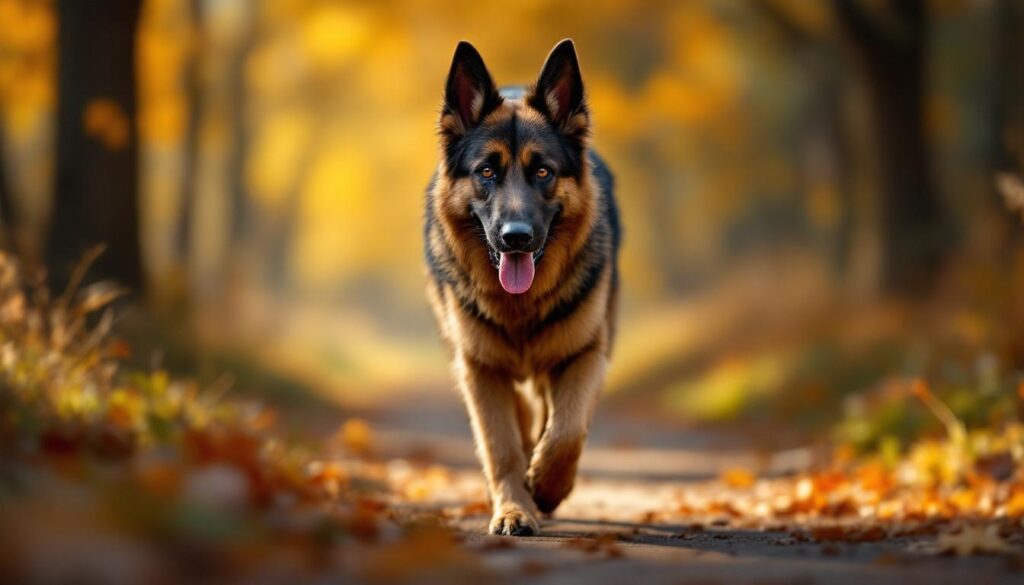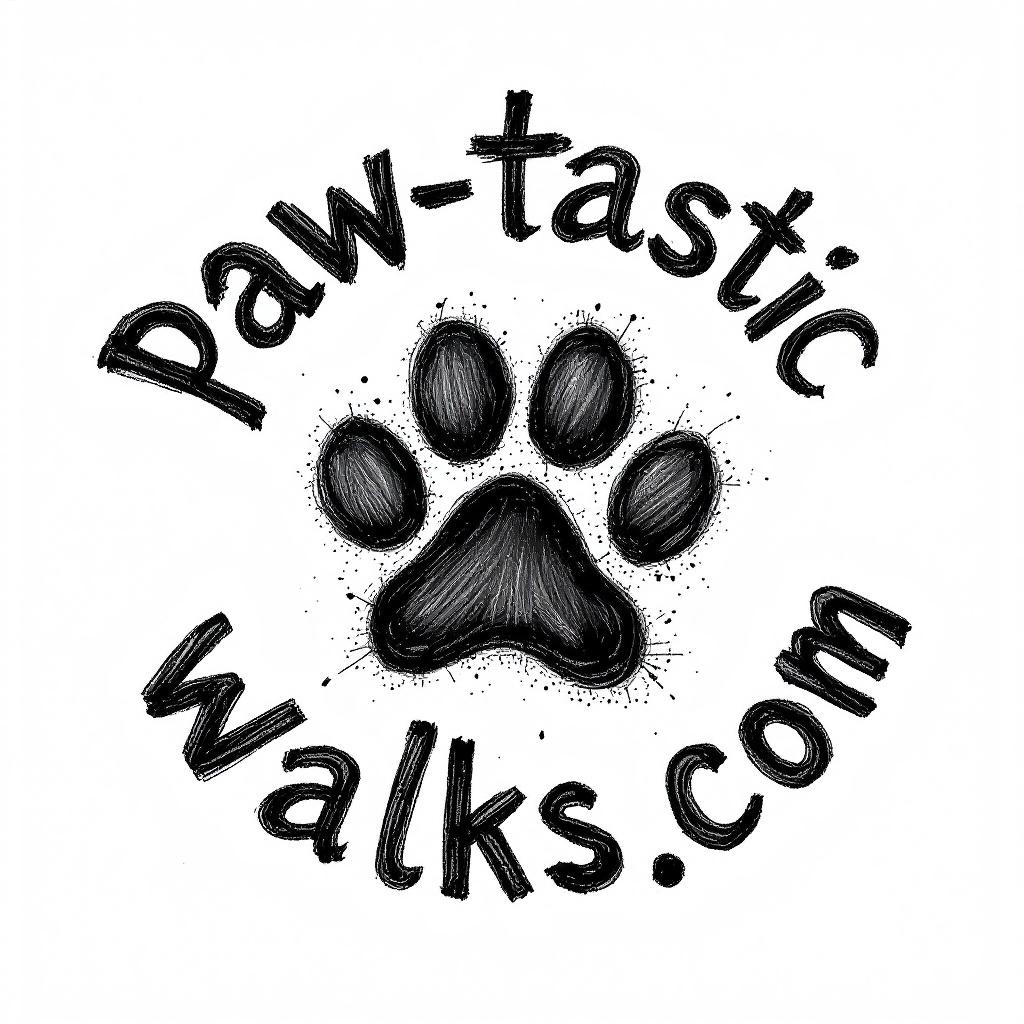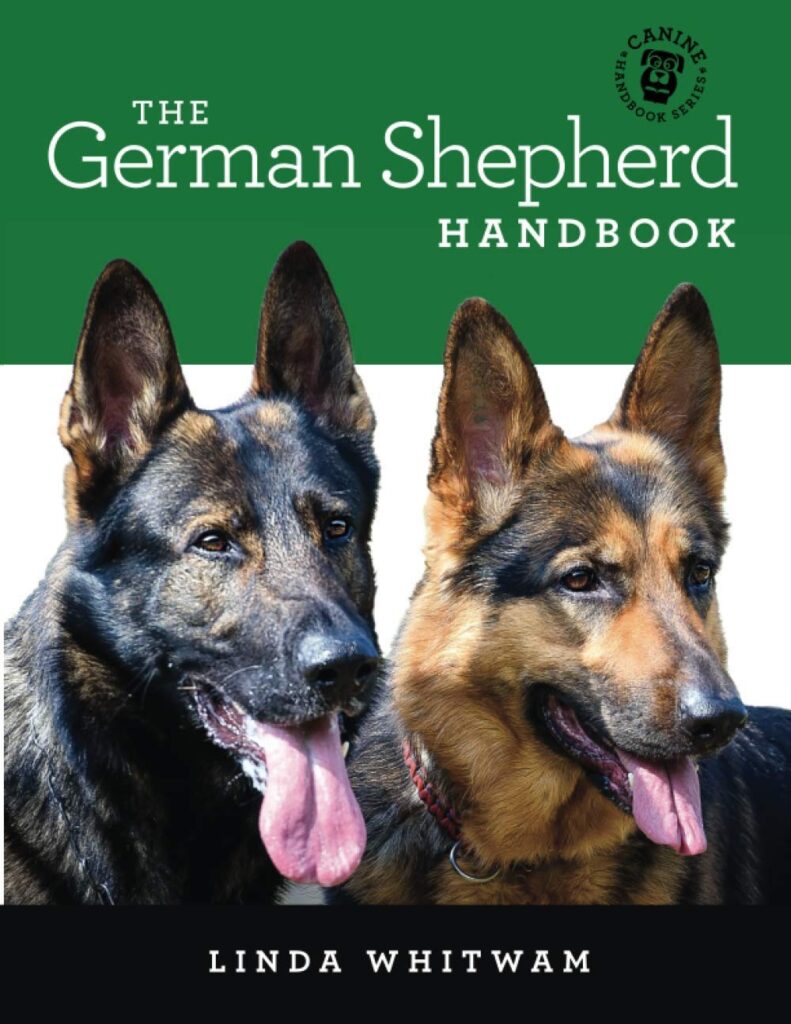Practical Tips for East Cornwall Dog Owners
Discover friendly, step-by-step tips on how to walk a German Shepherd safely and enjoyably, making every outing fun for both you and your loyal pup.
Walking a German Shepherd isn’t just about putting on a lead and stepping outside.
These spirited, smart dogs need more than a basic walk: they need an adventure that keeps body and mind busy.
If you live in East Cornwall and want to know how to walk a German Shepherd the right way, you’re in the perfect place.
Regular walks help your German Shepherd burn off extra energy, boost their mood and keep them healthy. A well-structured outing also helps avoid boredom-based mischief.
With services like daily dog walks, group dog walks, and puppy walking services, there are lots of ways to give your furry friend what they need.
If you ever need help, you can easily find trusted dog walking services in East Cornwall or search for “pet walking near me” for more options.
Learning the basics of local dog walking, what makes a reliable dog walker and even what dog walking rates and options might suit you can make daily walks easier and more fun for both you and your pet.
For those curious about why these energetic dogs need such regular activity, check out the German Shepherd Wikipedia page for some background.
With the right steps and support, every walk can be a joy for your dog—and a stress-free outing for you.
Understanding the German Shepherd’s Walking Needs
Before you grab the lead and lace up your boots, it’s smart to learn what makes German Shepherds such unique walking partners.
This popular breed isn’t just active—they’re hardwired for both action and thinking.
Knowing how to walk a German Shepherd the right way can make all the difference, especially if you want a happy, healthy pup and an easy walk for yourself.
 Photo by Ruben Ascensao
Photo by Ruben Ascensao
Why Regular Walks Matter for German Shepherds
Daily exercise is not just a luxury—it’s a real need for this breed. German Shepherds are big, powerful dogs with plenty of energy to burn.
Without regular movement and mental stimulation, they can become bored and frustrated. The result?
Chewed furniture, unruly behavior, or a nervous, unhappy pet.
Here’s what makes those daily dog walks so important:
- Physical Health: Regular walks help build strong muscles and keep joints supple. According to Better Health Channel, dog walking boosts cardiovascular fitness and lowers stress for both dogs and owners. It also helps maintain a healthy weight and reduces health risks.
- Mental Wellbeing: Sheps are smart and curious. Exploring new sights and smells keeps their brain sharp and satisfied. Skip the walk, and you may end up with a stir-crazy companion looking for trouble.
- Preventing Problem Behaviors: Many issues, such as digging, barking, or chewing, come from boredom. Good walks, especially using group dog walks and varied routes, prevent these habits from taking root.
Professional dog walkers often recommend sticking to a daily schedule. If you’re searching for trusted support in East Cornwall or nearby, services like Paw-tastic Walks’ regular dog walks can keep routines consistent and pets content.
Not sure how much is enough? Many experts say that most German Shepherds need at least one to two hours of exercise every day.
If you’re busy, local dog walking or even a quick look for “pet walking near me” online might be the relief your schedule needs.
Interested in more details about the benefits? You may find VCA Hospitals’ list of dog walking benefits a helpful resource.
Puppy vs. Adult Walking Requirements
Whether your German Shepherd is a floppy-eared pup or a mature dog, they all need exercise—just in different ways.
Puppies:
These bundles of energy grow fast, but their joints are still developing. They need short, gentle walks, often 5 minutes per month of age up to twice a day.
A three-month-old pup, for example, should walk about 15 minutes at a time. Overdoing it can lead to joint problems later on.
Think of walks at this stage as fun training sessions—lots of sniffing, stops, and socializing. If you work long hours or need help, consider local puppy walking services that cater to their special needs.
Adults:
Once they’re fully grown (usually at 12-18 months), German Shepherds need a lot more exercise. Adults thrive on long walks, jogs, or even hikes through the countryside.
Varying the pace and route keeps things exciting and taps into their need for adventure. Group dog walks can also add a social element, building good manners around other dogs.
Key tips for safe and happy walks:
- Use a sturdy lead and a well-fitting harness.
- Vary your routes to keep your dog curious and engaged.
- Bring water, especially on warm days.
- Avoid long walks for puppies or seniors—keep it age-appropriate.
- Watch their body language; tired pups may lag, while restless dogs might pull.
If you ever find yourself stuck or need a break, you can always seek help from a reliable dog walker or research the best dog walking rates and options in your area.
For a deeper dive into how dogs develop physically and mentally through different life stages, the German Shepherd Wikipedia page offers plenty of technical insight.
With the right mix of daily dog walks, professional support, and a bit of local knowledge, you’ll have a German Shepherd that thrives on every outing—no matter their age.
How to Walk a German Shepherd: Step-by-Step Guide
Taking your German Shepherd for a walk shouldn’t feel like a wrestling match or a guessing game.
Whether you’re new to handling a big, clever dog or just want to brush up on best practices, this step-by-step guide will walk you through what you need.
You’ll learn how to prepare, teach leash manners, boost social skills, and handle those common challenges that crop up on Cornish country lanes.
Preparing for the Walk: Essential Gear and Safety

Every successful dog walk starts with good preparation. With German Shepherds, sturdy gear and a few safety checks make the outing safer, warmer, and more fun.
Top Essentials for Every Walk:
- Harness: Use a padded, escape-proof harness that won’t cut across your dog’s chest. Harnesses offer better control (especially for big, curious Sheps) and are safer than a collar for strong pullers.
- Lead: A 4–6-foot sturdy lead keeps them close and gives you control. For training, avoid retractable leads which can tangle or make it tricky to manage quick movements.
- Lights and Hi-Vis: Don’t be caught out by Cornish drizzle or fog. Hi-vis leads or coats, and a clip-on LED collar light, keep you and your dog visible on early mornings or dreary afternoons.
- Weather Checks: In Cornwall, the weather changes quickly. Layer up yourself, and pack a quick-dry towel. Keep a close eye on your dog’s body language in extreme weather. If it’s hot, walk early or late to avoid heatstroke, and carry water on every outing. In winter, check their paws for ice or grit after walking on salty village paths.
Extra Safety Tips:
- Check the fit of all gear each time you head out.
- Always carry poop bags and a contact tag.
- Watch for livestock or wildlife—Cornwall’s lanes can surprise you.
If time or challenging weather makes walks hard to fit in, don’t underestimate the value of a professional dog walker who understands the area and breeds like German Shepherds.
Hiring a pro can help when you’re busy, and it’s easy to compare dog walking rates and services in East Cornwall to find a fit that works for your schedule and budget.
For more details on preparing for dog walks in all kinds of weather, check out this RSPCA guide on dog walking in winter.

Teaching Leash Manners and Socialisation
Leash manners can turn a tug-of-war into a pleasant adventure.
German Shepherds are quick learners—but their brains and bodies need to be challenged the right way.
Steps for Calm, Polite Lead Skills:
- Start Simple: Choose a quiet area to introduce leash basics. Let your dog sniff, then reward calm walking by your side with a small treat or gentle praise.
- Keep Sessions Short: Especially for puppies, keep early walks short and fun. Err on the side of more, shorter outings rather than one long haul.
- Consistency is Key: If your dog pulls, calmly stop walking. Wait until the lead slackens, then continue. Over time, your dog learns that pulling doesn’t work.
- Use Cue Words: Try using words like “with me” or “heel” paired with treats or pats when they’re walking well.
German Shepherd puppies benefit from early and gentle social experiences.
Group walks are an easy way to teach polite greetings, boost confidence, and help with canine communication skills.
Social dogs are less likely to overreact in busy places or around new dogs.
Quick Socialisation Tips:
- Arrange group dog walks to practice calm behavior around others. These offer safe, structured learning in a friendly group.
- Pair up young dogs with older, calm walkers.
- Choose quieter times or locations (like parks over footpaths during rush hour).
If you’re not sure where to start or want to give your dog more social time, joining a professional dog walker for supervised walks or checking for puppy walking services is a smart choice. Group outings build both confidence and manners.
For more on healthy socialisation, explore the basics of puppy socialisation on Wikipedia.
Handling Common Challenges
No walk is ever perfect—especially with such a clever, energetic dog!
Most German Shepherd owners face pulling, barking at squirrels, or getting overwhelmed by other dogs.
Common Walking Challenges and What Helps:
- Pulling: This is the most common issue. Go back to basics: stand still when the lead goes tight. Reward walking with a loose lead. A front-clip harness adds helpful control.
- Excessive Barking: If your dog barks at people or dogs, distract them with treats or try moving off the path. Calmly ask for a “sit” to focus their mind.
- Reactivity: Some German Shepherds get overexcited or scared by sudden sights or sounds. Practice calm exposure—walk at quieter times or choose wider paths. Gradually introduce more triggers as they improve.
- Chasing Wildlife or Livestock: Always keep your dog on a lead around Cornish fields and forests. Practice solid recall in safer, enclosed spaces first.
When to Seek Help:
- If you’re feeling overwhelmed or your dog’s behavior won’t budge, searching for pet walking near me will turn up local experts.
- A reliable dog walker is often a game-changer for busy owners or those dealing with tricky behavior.
- Trouble with recall, lunging, or aggression? Don’t wait—professional advice pays off and keeps everyone safe.
For more ideas and dog walking tips tailored to different breeds and energy levels, browse the many dog exercise services in your area.
Sticking to these steps will help make every outing safer, calmer, and much more enjoyable for both you and your German Shepherd.
Finding Quality Dog Walking Services in East Cornwall
Living in East Cornwall with a German Shepherd means you get to explore beautiful countryside, but sometimes busy schedules or unexpected events make daily walks tricky to manage.
If you’re looking for support—whether for regular outings or an occasional handoff—finding the right dog walking services is key.
Here’s how to choose a walker you can trust, what to ask, and how dog walking rates and options work for German Shepherd owners.
What Makes a Great Dog Walker?

Not every dog walker is made equal, and choosing well makes all the difference. A reliable dog walker will treat your pet like their own and give you peace of mind, whether you need daily dog walks or last-minute help.
As you search for local dog walking services, these qualities set great walkers apart:
- Reliability: Always on time, never misses a booking, and sticks to the walk plan.
- Experience with Large Breeds: German Shepherds need a confident, knowledgeable handler who knows what to do with strong or excitable dogs.
- Compassion: Treats every dog gently, understands their quirks, and genuinely enjoys their company.
- Good Communication: Shares updates, is honest about your dog’s walk, and stays reachable by phone or text.
- Pet First Aid Skills: Knows what to do if an emergency happens, from bee stings to muddy paws.
When interviewing or researching local dog walking options, ask for references or testimonials from other clients.
A professional dog walker will welcome your questions and even offer a meet-and-greet session.
Checking their insurance, transport safety measures, and how they handle challenging situations is smart—especially for a lively breed like the German Shepherd.
For more insights on handling tricky dog walks or making sure your walker handles challenges well, see these tips for dealing with loose dogs which can help you spot a walker’s calm confidence in action.
Still not sure where to begin your search? Try looking for “pet walking near me” in your area and read through reviews specific to large or energetic breeds.
It’s a bonus if your walker also leads group dog walks, as social outings help with your pup’s behavior and confidence.
Want to learn about what makes different breeds respond well to various walking styles? There’s a helpful Wikipedia guide to dog walking that covers the basics and beyond.
Understanding Dog Walking Rates and Service Options
If you’ve ever been confused by dog walking rates or baffled by different service choices, you’re not alone.
Pricing varies, and knowing what you’re paying for helps avoid surprises.
Here are the main factors that affect dog walking rates:
- Duration: Longer walks naturally cost more. Many local dog walking services offer both quick 30-minute strolls and longer countryside adventures.
- Individual vs. Group Walks: Solo outings are ideal for dogs needing one-on-one time or special training. Group dog walks are great for social pups, often at a lower rate per dog.
- Transport Needs: Does your walker offer free pick-up and drop-off? This is a big plus for busy families and is often included (like with many East Cornwall services).
You’ll also notice specific terms when booking dog walking services:
- Daily Dog Walks: Walks every weekday, same time slot, perfect for working owners or high-energy dogs.
- Occasional or Ad-hoc Walks: Book as needed, great for last-minute appointments or days when life gets hectic.
- Puppy Walking Services: Shorter, gentler walks designed for young dogs, with extra focus on training and socialization.
Many providers list detailed pricing up front. For example, you can see a full Paw-tastic Walks services and price list to compare options that fit your family’s needs.
If safety or risk management is a priority, consider reading about the safety concerns of dog walking to see how your chosen service manages different situations.
When you’re considering how to walk a German Shepherd with extra help, knowing you have flexible options—daily, group, or puppy-specific—can make walks easy and enjoyable.
Whether you book professional support every day or once a week, clarity on service choices makes decision-making stress-free.
If you want others’ perspectives or to get an idea of practical rates and service trends, you can always check out external reviews, forums, or trusted resources.
And don’t forget, working with a reliable local walker gives your dog both exercise and companionship, which is exactly what a happy Shepherd needs.
Conclusion
Learning how to walk a German Shepherd well makes every day brighter for both you and your dog. Regular walks, social time, and good gear all help turn a busy dog into a calm and happy friend.
Relying on trusted local dog walking services brings peace of mind, especially for energetic breeds that thrive on daily dog walks and new adventures.
Professional support isn’t just for busy days. A reliable dog walker knows how to manage group dog walks, age-appropriate puppy walking services, and the challenges that come with active breeds.
If you’re new to the area or want more confidence, searching for “pet walking near me” can connect you to experts ready to help.
East Cornwall is packed with beautiful places for local dog walking. Enjoying these with a professional dog walker or by trying more dog exercise services gives your German Shepherd the best of both worlds: freedom and safety.
Curious about details or looking to ask questions? Reach out to Paw-tastic Walks for tailored help or explore their full range of dog walking services and rates.
For a bit more technical background, the dog walking Wikipedia page is a handy resource.
Happy walking—here’s to bigger grins, waggy tails, and more memories on every stroll!













